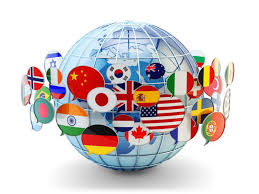In today’s world, knowing foreign languages is very important. Moreover, being able to quickly translate into Italian is becoming more valuable. Italy has a rich history and culture. As a result, more people want to learn Italian. Consequently, it’s becoming more popular. Italian is key in business, tourism, and culture. Therefore, fast Italian translations are crucial for reaching Italian speakers or working with Italian partners. In this article, we’ll look at the best ways to translate quickly into Italian and the tools used.
Why Fast Italian Translations Matter
Italian translation is important in many areas of life. For instance, these include:
Business and trade
Hotels and tourism
Food industry
Education and science
Marketing and ads
In these areas, fast Italian translations are in high demand.
How to Translate Quickly into Italian

There are several ways to translate fast. For example:
Online translators like Google Translate, DeepL, and Microsoft Translator
Mobile apps like Google Lens and iTranslate
Professional translation agencies for complex texts
Computer-Assisted Translation (CAT) tools
For a quick, good Italian translation, it should:
Sound natural in Italian
Keep the original meaning
Have correct grammar and spelling
Match the tone of the original
Use the right words and terms
Challenges in Fast Italian Translations
It can be hard to translate idioms and casual language. In fact, Italian has many phrases that don’t have direct matches in other languages. This is tough for machine translators, which often struggle with creative language.
How to Make Fast Italian Translations Better
To avoid mistakes and get the best translation:
Firstly, check the context to make sure it matches the original
Secondly, edit and proofread the text
Thirdly, if using machine translation, edit it manually
Finally, compare results from different translation tools
Fast Italian translation is challenging. Indeed, you need to balance speed and quality. Additionally, avoiding rush errors is key. Furthermore, adapting the style for different uses is also important. Translators must manage time well while staying accurate. Moreover, dealing with special terms quickly can be hard. In big projects, keeping the whole text consistent is crucial.
For business, legal, or technical texts, special knowledge is needed. In addition, working with a native Italian speaker is very helpful. They can check if the text sounds natural, suggest better words, and catch cultural details.
In Conclusion
Fast Italian translations can help in many situations. Modern tools let us translate quickly. However, for high-quality translation, we need to check it carefully and use professionals when needed. The best method depends on what you’re translating, but the right tools can make talking to Italian speakers much easier. Overall, investing in good Italian translations can open up new opportunities and improve communication with Italian-speaking audiences.



